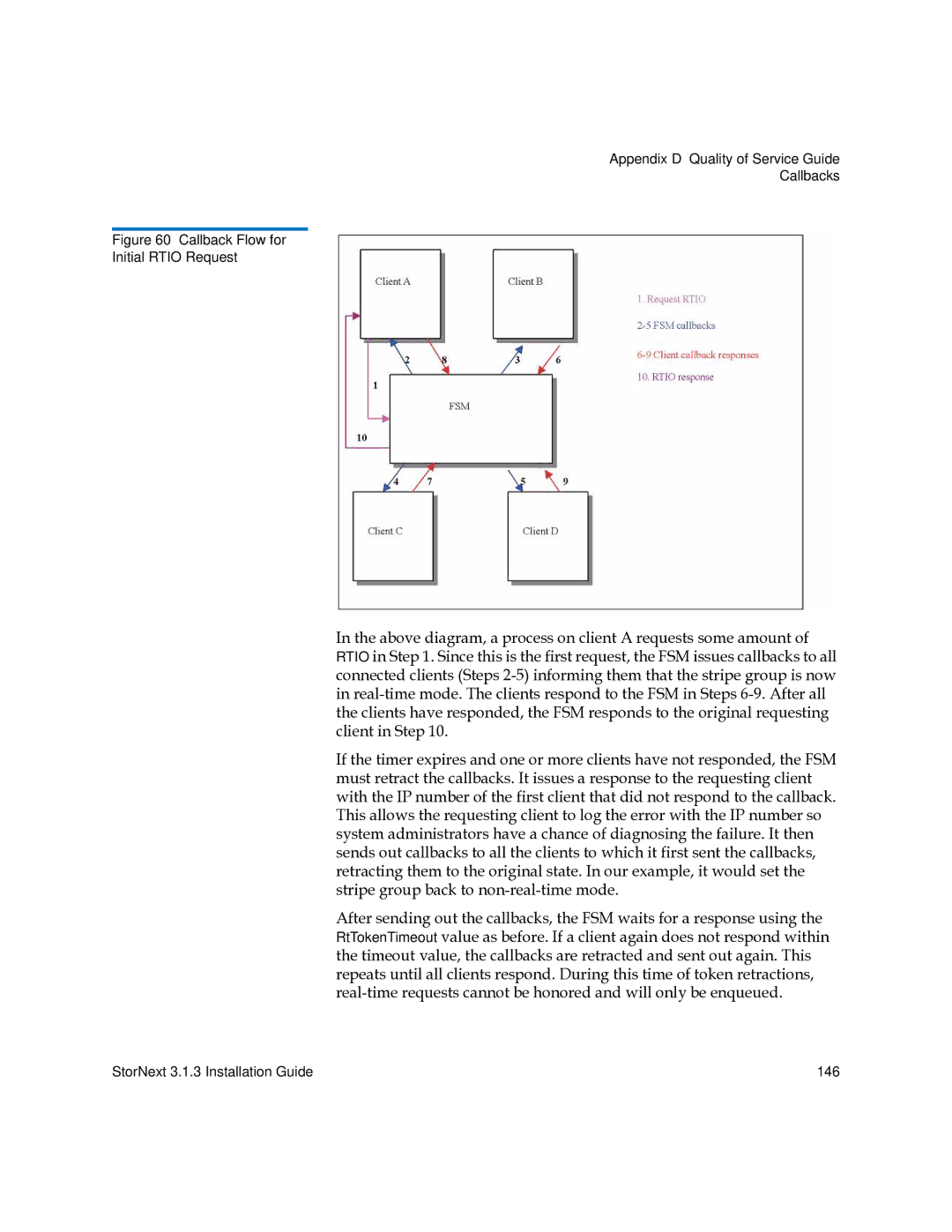
Appendix D Quality of Service Guide
Callbacks
Figure 60 Callback Flow for
Initial RTIO Request
In the above diagram, a process on client A requests some amount of RTIO in Step 1. Since this is the first request, the FSM issues callbacks to all connected clients (Steps
If the timer expires and one or more clients have not responded, the FSM must retract the callbacks. It issues a response to the requesting client with the IP number of the first client that did not respond to the callback. This allows the requesting client to log the error with the IP number so system administrators have a chance of diagnosing the failure. It then sends out callbacks to all the clients to which it first sent the callbacks, retracting them to the original state. In our example, it would set the stripe group back to
After sending out the callbacks, the FSM waits for a response using the RtTokenTimeout value as before. If a client again does not respond within the timeout value, the callbacks are retracted and sent out again. This repeats until all clients respond. During this time of token retractions,
StorNext 3.1.3 Installation Guide | 146 |
